IL MORO DI VENEZIA: ITALY CONTESTS THE AMERICA’S CUP MATCH FOR THE VERY FIRST TIME
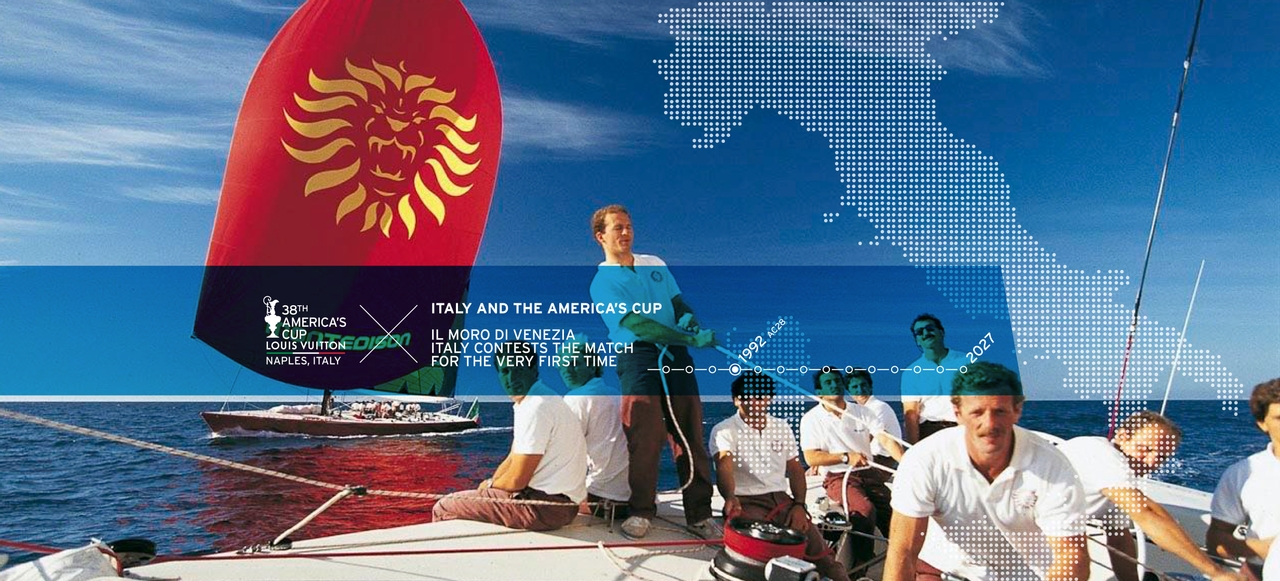
The transition from colourful and applauded challenges of 1983 and 1987, to Challengers for the XXVIII America’s Cup in San Diego, was a pivotal moment in the history of Italy in the competition. The groundwork laid by the Azzurra and Italia syndicates, as well as considerable success in the offshore maxi boat scene, was enough to convince agri and chemicals businessman Raul Gardini to take Italian participation to the next level under the burgee of the Compagnia della Vela di Venezia yacht club. The result was ‘Il Moro di Venezia’, a five-boat programme that left no stone unturned in their quest to win the oldest trophy in international sport.
RELIVE IL MORO'S STORY
Gardini’s vision was to embrace technology and with the new International America’s Cup Class of boats being built in carbon fibre and hi-tec materials for the sails, the playing field was, in his eyes, level enough to warrant an all-out tilt at winning. It was a brilliant campaign, one that truly captured the Italian public’s spirit and support from the outset. A lavish $3m launch party in Venice, directed by Franco Zeffirelli, the famous film director, was spectacular, closing off the city and providing some of the most memorable images of Italian sailing heritage and style as this money-no-object campaign ratcheted into gear with huge ambition and flair.
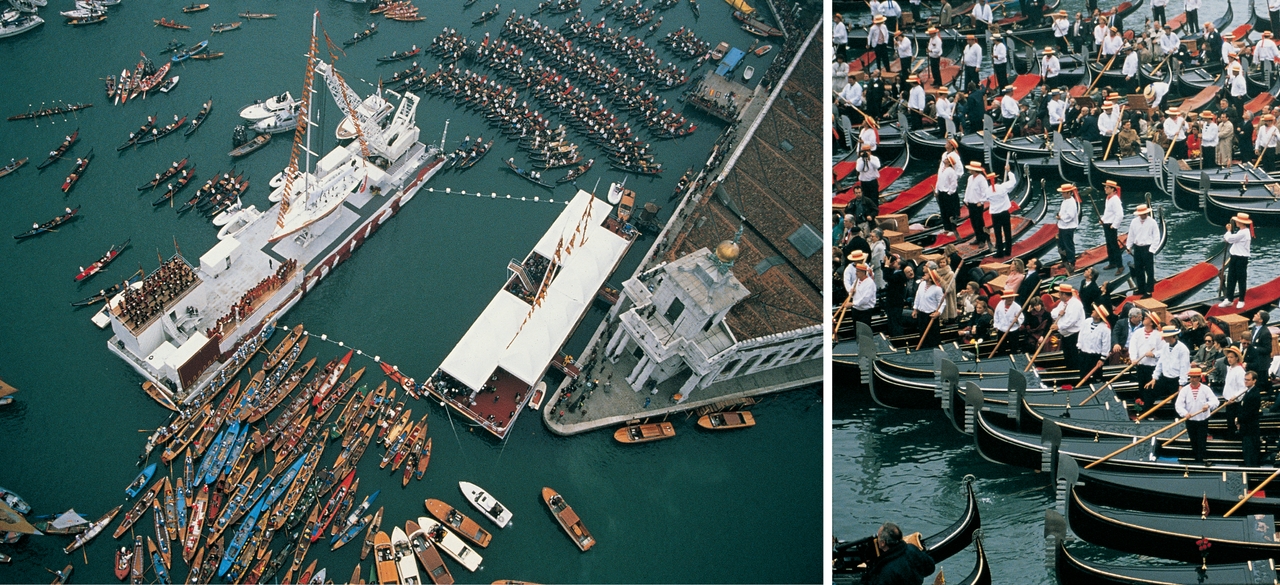
LEFT An aerial shot of the Il Moro di Venezia launch in 1990 that brought the city of Venice to a standstill - note the honour guard of the city’s gondola community. | RIGHT The gondolas of Venice as the first Il Moro di Venezia yacht was launched on March 11th 1990. Photos: © Carlo Borlenghi.
Leading the sailing team was 29-year-old Paul Cayard who had been involved with the Consorzio Italia team in a helming capacity and had also impressed Gardini by leading his team to victory at the Maxi World Championships in San Francisco in 1989.
There was no recorded budget for the America’s Cup, but estimates put it at $100m – an eye-watering sum in 1992 and as Gardini stated: “This challenge arises from the understanding I have of sailing and the sea, and I have faced it both in sports and in the field of technology. With Il Moro we want to bring to fruition a pilot project in the area of technologically advanced materials.”
Whilst material science was ultimately a deciding factor at the 1992 America’s Cup, it was on the design board where the ultimate victory was won. Designers like Bruce Farr and German Frers were getting to grips with the new IACC rule and trading off between heavy and light displacement boats, narrow and wide hull forms, and radical versus refined keel, trim tab and rudder designs. German Frers was the appointed designer for the Il Moro di Venezia programme and the first two boats built – ITA-1 and ITA-7 – gave huge performance clues. ITA-1 was a moderate displacement whilst ITA-7 was super lightweight – something that the Italian team discarded after just three weeks of sailing.
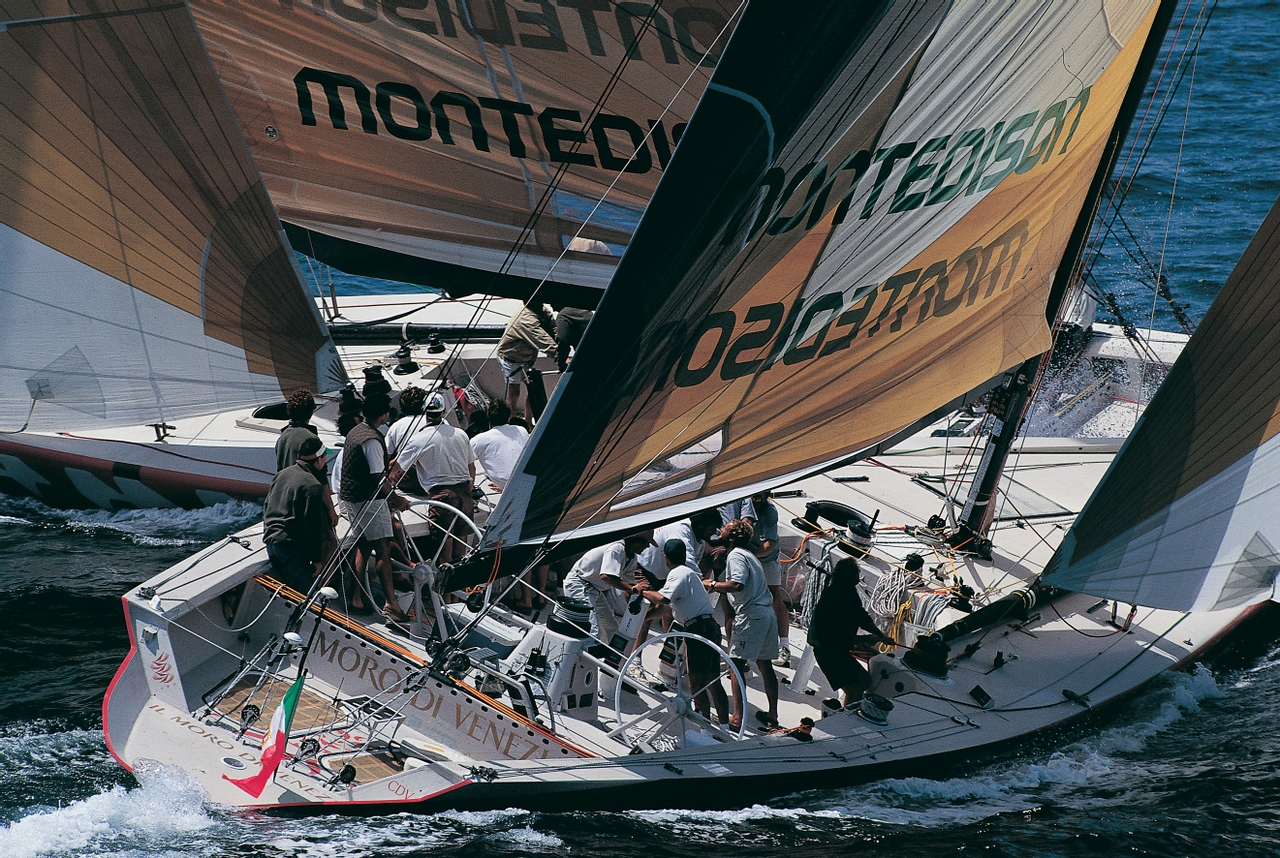
Two boat testing was a key part of the Il Moro di Venezia programme to develop the appendages and the sail package as they worked up to the 1992 America’s Cup. Photo: © Carlo Borlenghi.
Opting for heavy displacement boats, the next two Il Moro di Venezia boats – ITA-15 and ITA-16 – concentrated on the detailed sail programme and appendage development in order to provide the data and confidence required to build the final race boat – ITA-25. Raul Gardini proved to be a colourful team boss who deflected attention away from the team and very much gave them the most perfect platform on which to perform.
Arriving in San Diego, the team set up their base on Shelter Island, not far from Point Loma and almost immediately it becomes clear that out of the eight Challengers, the stand-outs are Il Moro di Venezia and the radical NZL-20 of New Zealand that features a 9-ton tandem keel with flaps off the trailing edges to steer, off the design board of Bruce Farr. In perfect conditions, the Kiwi boat was electrifying and through the opening two Round Robins of the Louis Vuitton Cup, topped the standings. By the end of the third Round Robin, the upwind deficiencies of Il Moro di Venezia were recognised and addressed, and famously Raul Gardini returned to Italy confident that his team would make the finals saying: “Yes, I will come back, but only for the finals. With Il Moro we will have the opportunity to go into the final and I am pretty confident that we will be there.”
It was truly some of the closest racing ever seen in the Louis Vuitton Cup in 1992 and it was only right that the final be contested between New Zealand and Il Moro di Venezia, but it was an off-water debate that arguably swung the too-tight-to-call contest the way of the Italians.
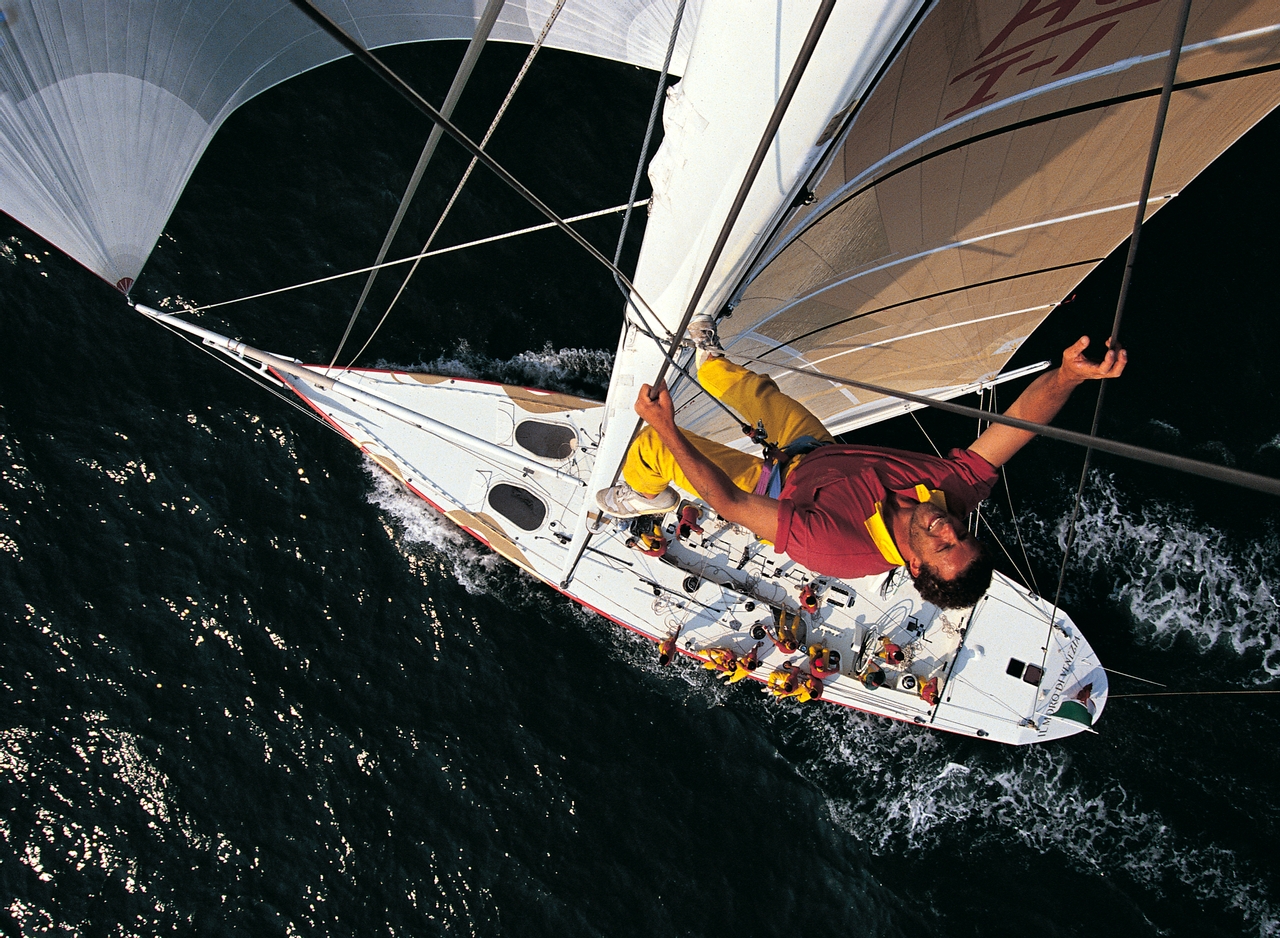
High up aloft on Il Moro di Venezia. It was a skill that was required in the Louis Vuitton Cup final against New Zealand when a crew-member was sent up the rig to retrieve a halyard. Photo: © Carlo Borlenghi.
After the fifth match of the Final, Il Moro came across the finishing line flying a red protest flag that subsequently resulted in a question being asked of the International Jury about the legality of the Kiwi’s spinnaker pole and bowsprit arrangement to fly the huge gennaker’s on the IACC boats. Although not strictly outlawed for the Louis Vuitton Cup via separate rules, the novel interpretation would have been ruled out for the America’s Cup Match. The protest and furore around the flying of the Kiwi gennaker was enough to have one race annulled for the Kiwis and the scoreline to remain at 3-1 in their favour. It was a deciding, pivotal moment.

Italy went wild with the news that two races later, the scoreline was 3-3 as Il Moro put in two outstanding performances on the water in lighter airs that left the Kiwis in panic mode.
Despite the young Kiwis coming out swinging, Paul Cayard held his nerve and chalked two further wins to win the Louis Vuitton Cup with a 5-3 scoreline and send Italy into the America’s Cup Match for the first time in the country’s history. Back home, Italy was in a state of rapture with the newspapers running front page headlines and the news channels leading on the story. Italian history was being made in San Diego.
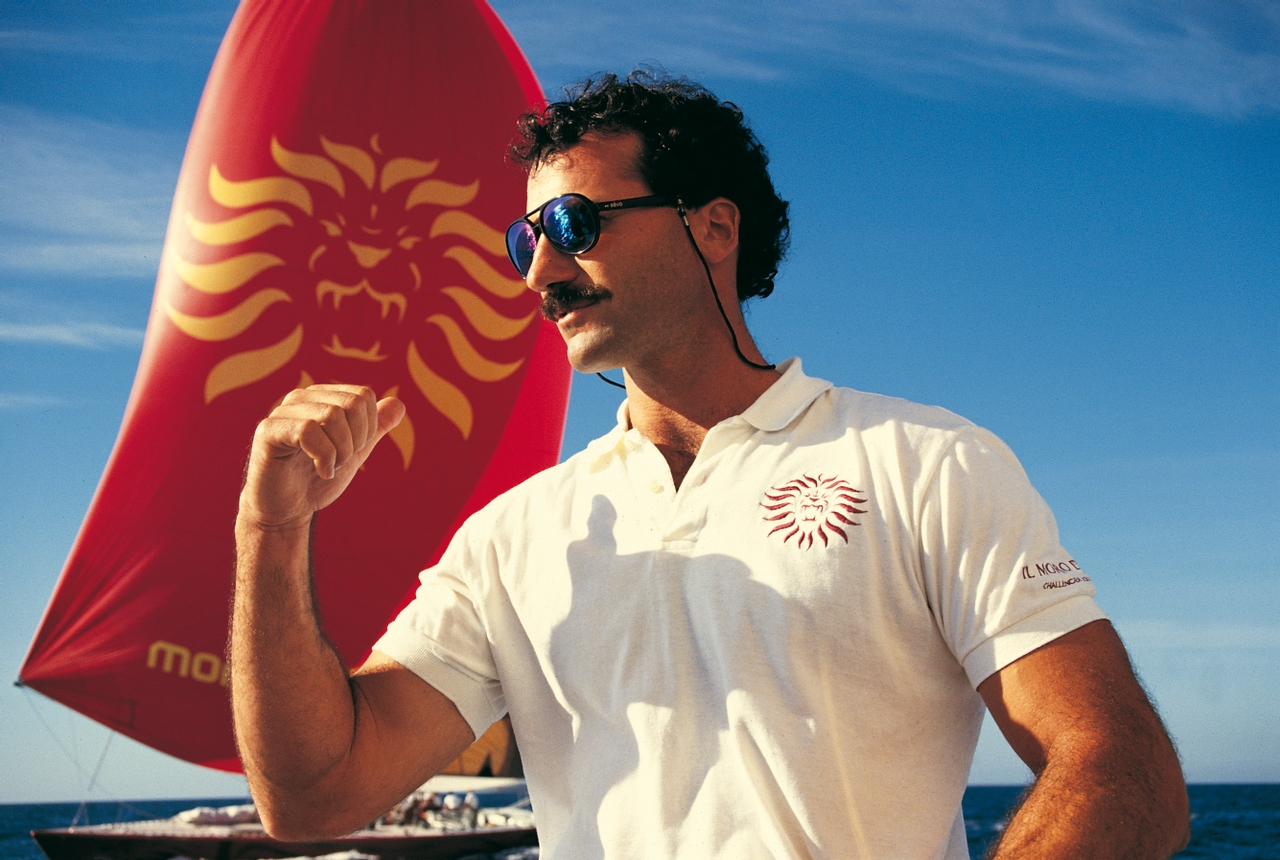
Paul Cayard, the mercurial skipper of Raul Gardini’s Il Moro di Venezia five-boat programme for the 1992 America’s Cup in San Diego. Photo: © Carlo Borlenghi.
However, facing the Il Moro di Venezia programme was an equally technologically advanced syndicate in the form of Bill Koch’s America3 team that in itself took material science to another level, employing MIT technicians to look over every aspect of the new IACC rule to find the edge. Doug Petersen, the designer for America3 took all the learnings that he observed from the Il Moro campaign and then made some crucial decisions, first of which was to produce a significantly narrower hull form and the next was to adopt lower surface area foils. It was a winning combination and although Il Moro di Venezia won the second race of the Match by just 3 seconds, the resultant scoreline was 4-1 and the America’s Cup was retained by the Americans.
In reflection, Paul Cayard commented: “We had to sail very well to win, and I don’t think we sailed as good as we did against New Zealand in the Challenger Finals.” Arguably the Italian team needed a mental reset after the momentous victory in the Louis Vuitton Cup that took so much out of the sailors and shore team, but they left San Diego knowing that the greatest prize in sailing was within their grasp and that the Il Moro di Venezia programme had taken Italian sailing to the very pinnacle.
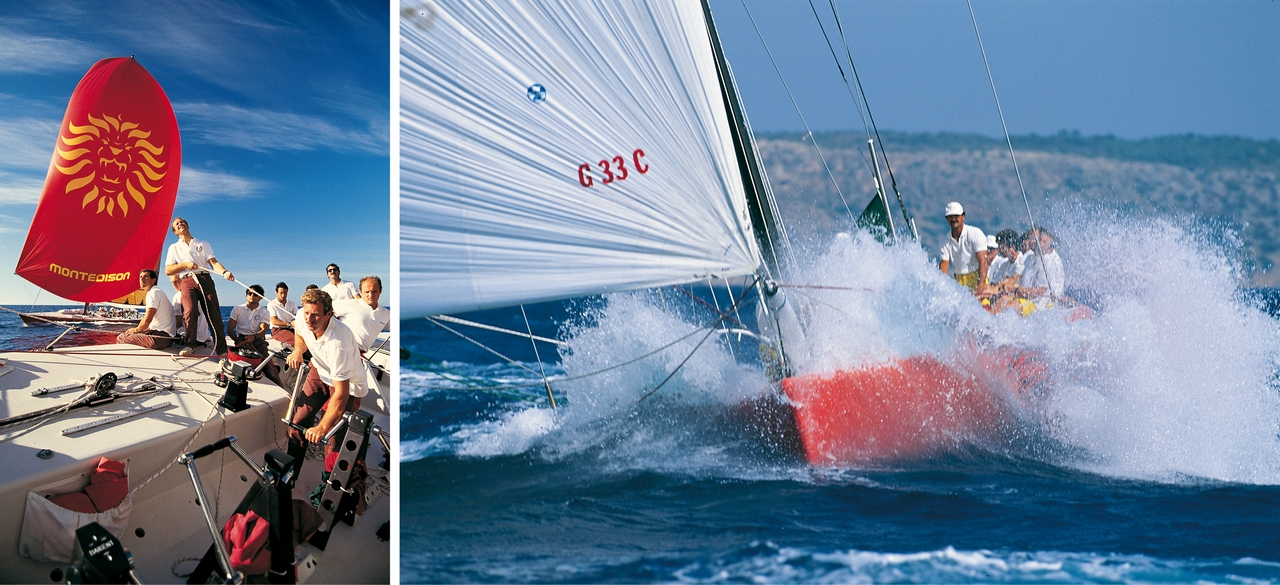
LEFT Raul Gardini insisted on appointing a young crew for Il Moro di Venezia under the command of Paul Cayard who got his first big Cup campaign break under Gardini. | RIGHT Paul Cayard drives Il Moro di Venezia hard under gennaker. The Italian sail programme, particularly their gennakers, steadily improved after input from the Ville de Paris syndicate. Photos: © Carlo Borlenghi.
It's a legacy that lasts through to this day and the Louis Vuitton 38th America’s Cup set to be held in Naples in 2027. Italy are not only hosting the world but fielding a mighty challenge in the form of the Luna Rossa team that took on the Il Moro di Venezia legacy and made it to the America’s Cup Match in both 2000 and 2021. The question is: can Luna Rossa go one step further? Many are predicting just that.
Be there in Naples in 2027 for the Louis Vuitton 38th America’s Cup. Italian history could well be written.
by Magnus Wheatley

The Louis Vuitton 38th America's Cup, Naples 2027
For the first time ever the Louis Vuitton Cup and Louis Vuitton America’s Cup Match will be sailed in Italy, a country with one of the most colourful and enthusiastic America’s Cup histories.
In 2027, the world will look to Italy and specifically to Naples, the capital of the Campania region in Italy, a UNESCO World Heritage Site and one of the most ancient cities in Europe, as it becomes the Host City for the world’s oldest international sports trophy.
The fight for the Louis Vuitton 38th America’s Cup will take place under the watchful shadow of Mt Vesuvius and just off the waterfront of the vibrant city. With a proud heritage and rich history, Italy and Naples offer the Louis Vuitton 38th America’s Cup an unparalleled experience that one way or another is certain to add to the myth, obsession, rivalry and innovation of the America’s Cup.
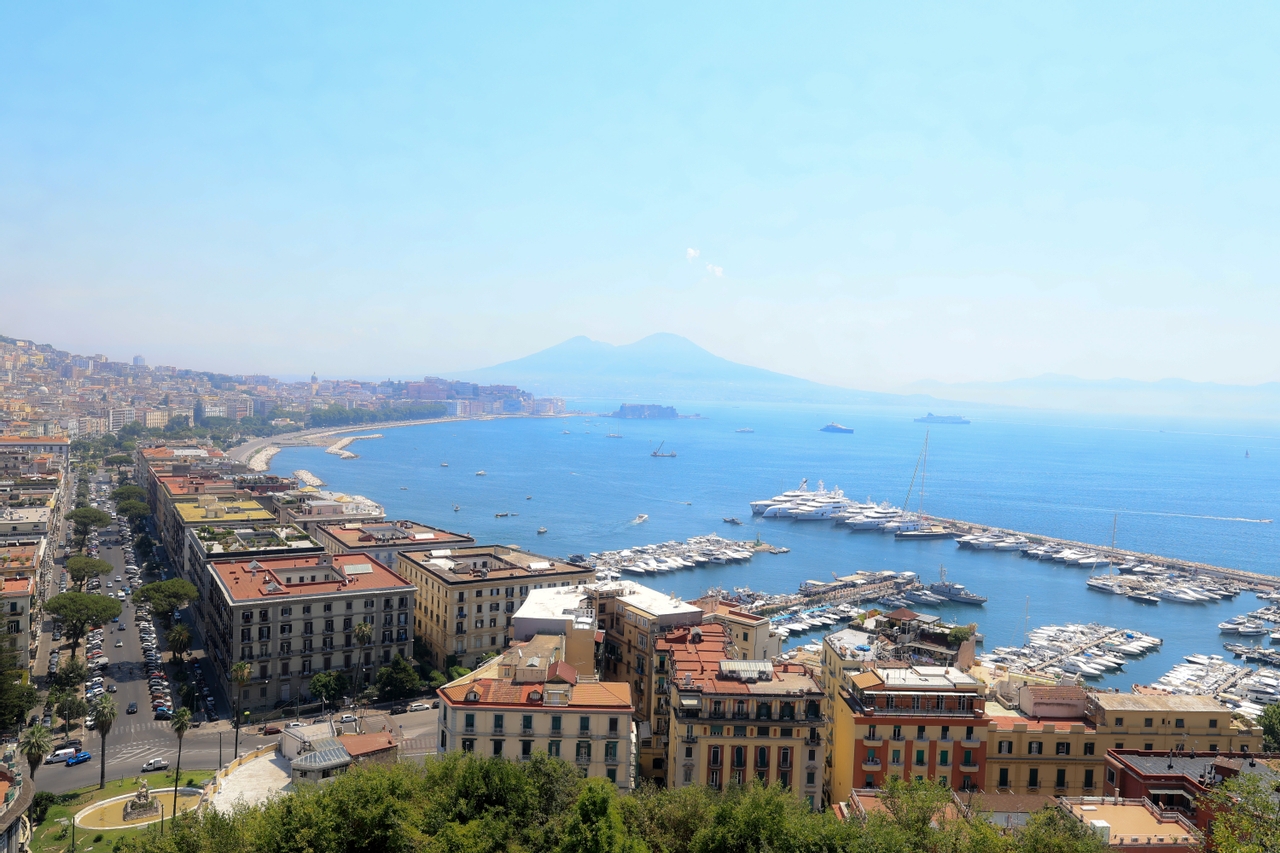
Photo: © Stefano Albamonte / Comune di Napoli / America’s Cup